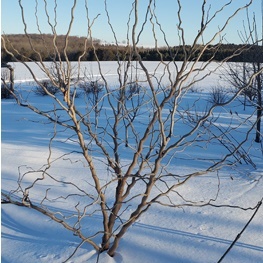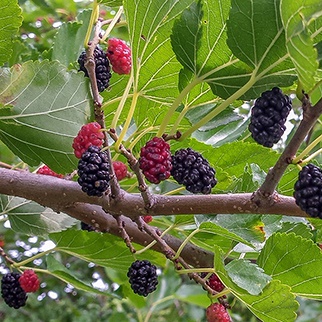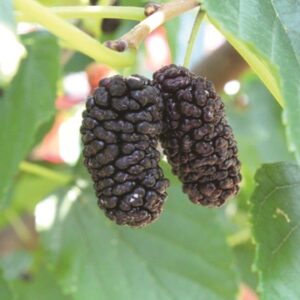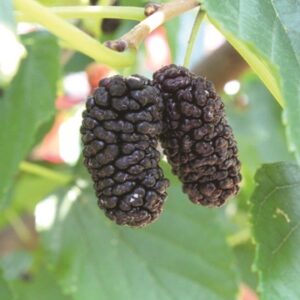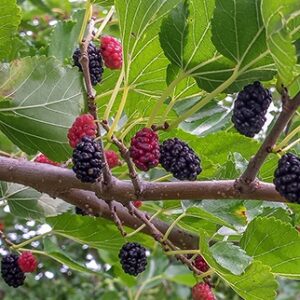Mulberries (Morus spp)
A vigorous, hardy, disease and pest resistant tree, the mulberry was often planted to attract birds keeping them away from other tree crops such as sweet cherries. It really is no wonder the birds love the juicy berries – the pleasing blend of sweetness and tartness makes it one of the best flavours of all fruits!
Now new research is indicating that from a health standpoint, mulberries may actually be the most valuable tree fruit. Dried mulberries and even the leaves are being touted as the latest superfood. The fruit itself has an impressive antioxidant punch, but a compound in the leaves called DNJ is what’s creating excitement. Drinking mulberry leaf tea with your meal helps to control blood sugar and possibly prevent diabetes. The tree is also appreciated for its ornamental appeal, however the dark fruited varieties should be planted away from sidewalks and driveways, as the fallen fruits can cause staining.
Bareroot unless otherwise stated
Mulberry : CONTORTED BLACK 30-60cm (12-24") grafted
$54.95
(Morus alba unryu)
As a unique edible landscaping addition, it is prized for its gnarled and twisted branches. In the winter time, in particular, the wavy, contorted limbs are rather eye-catching. Like all mulberry trees, it grows quite quickly for the first few years, but matures at only 2.5-3.5m (8-12'). Container growing is a possibility. And yes, it does also produce tasty, jet-black mulberries.
SELF-FERTILE | ZONE 4/5 | HARVEST: JULY-AUG
